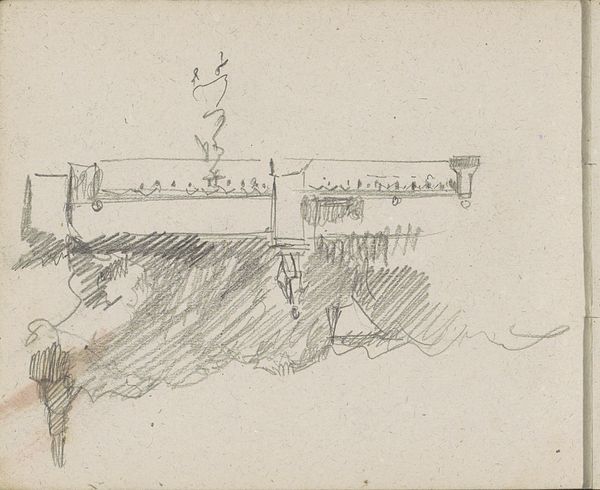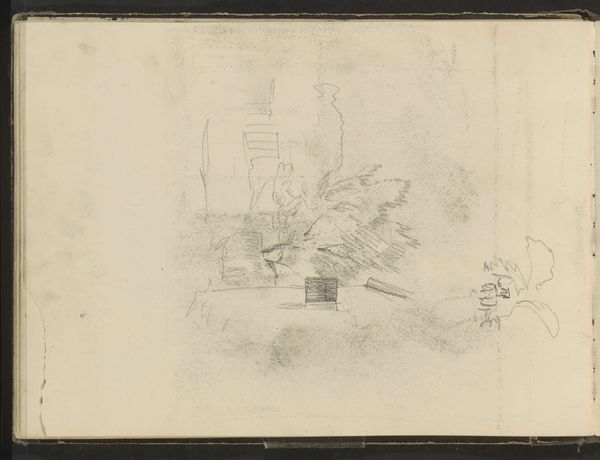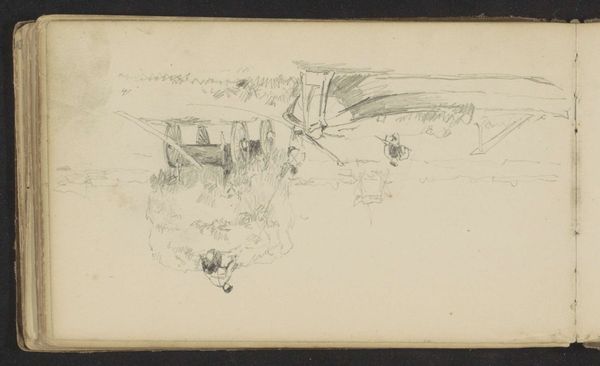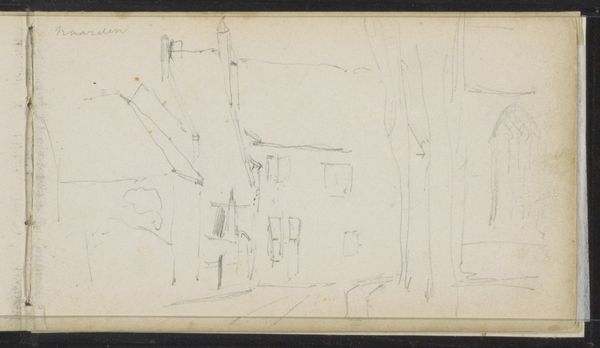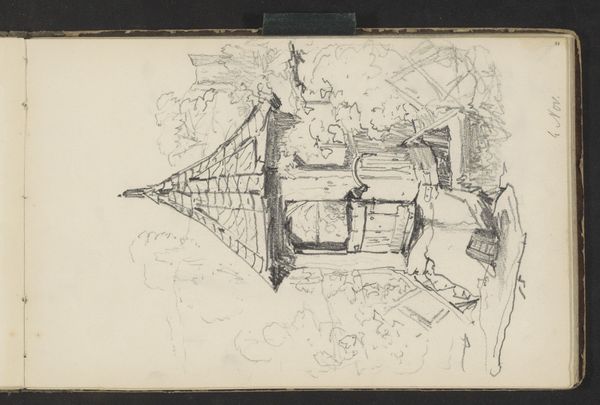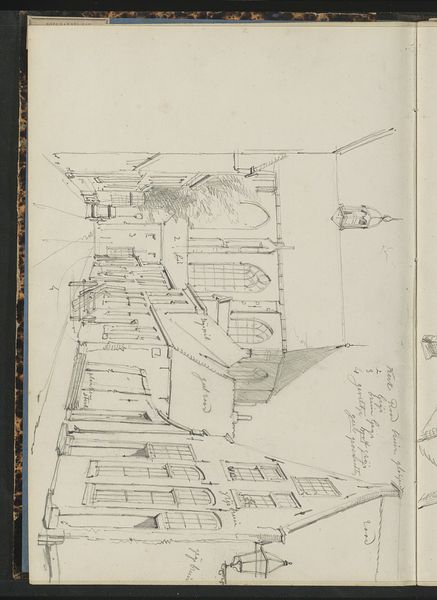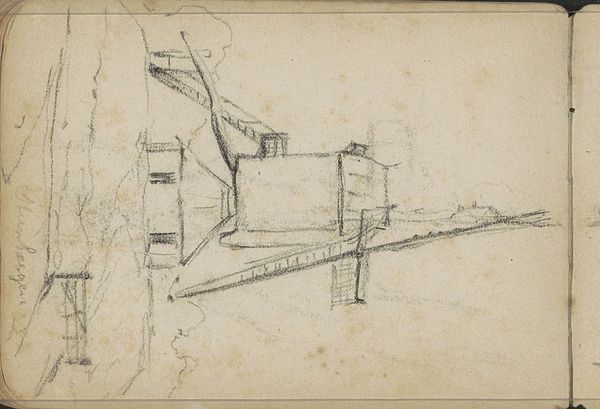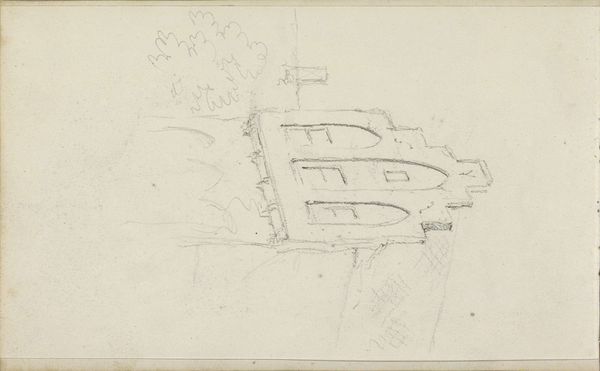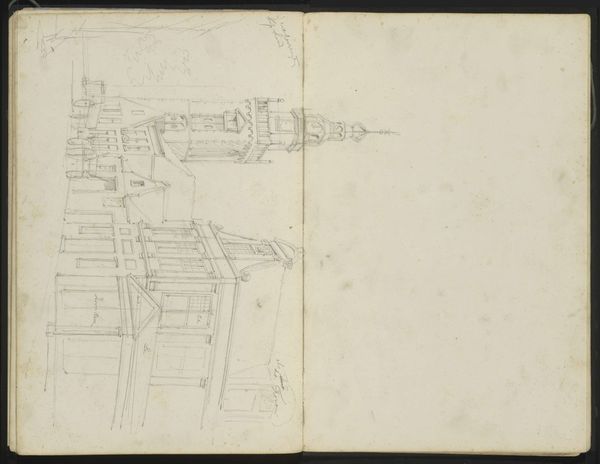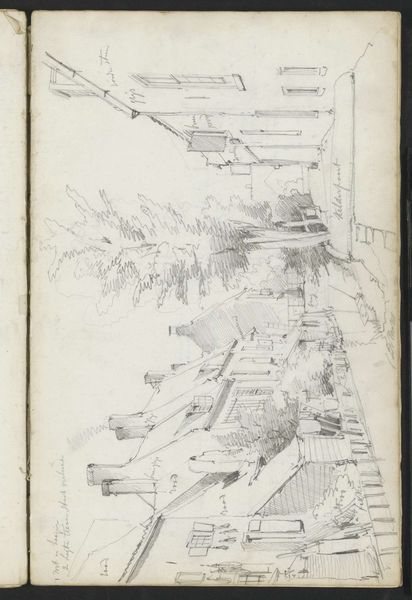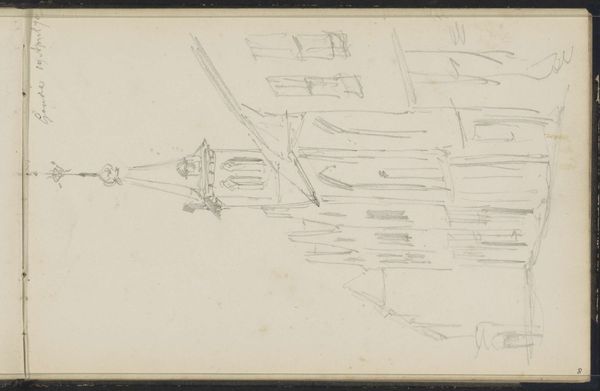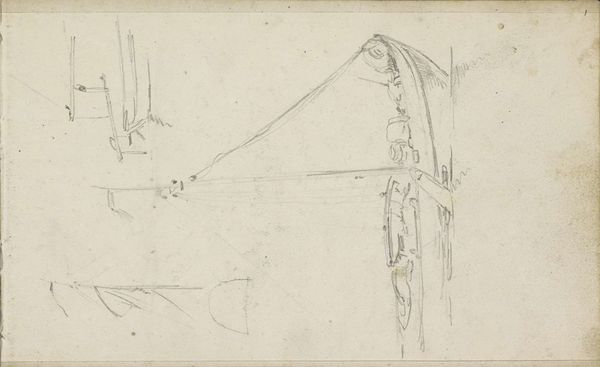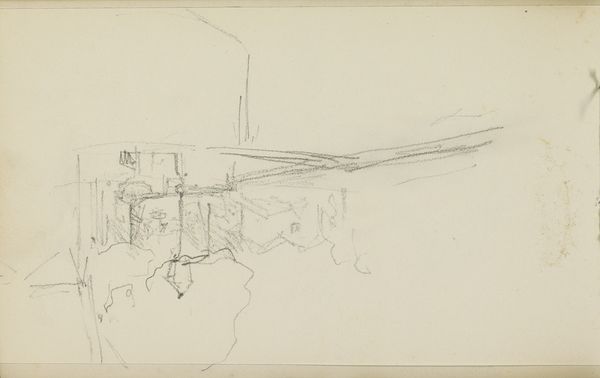
drawing, pencil
#
drawing
#
sketch book
#
landscape
#
mountain
#
pencil
#
sketchbook drawing
Copyright: Rijks Museum: Open Domain
Editor: Here we have Maria Vos’s “Church at the Foot of a Mountain,” a pencil drawing from the 1870s, currently held at the Rijksmuseum. I am really struck by the tentative, almost ephemeral nature of the marks. It feels like a fleeting moment captured on paper. What catches your eye about it? Curator: As a materialist, I see more than just a landscape sketch. I am interested in how this drawing reveals the social context of artistic production in the 19th century. Consider the availability of drawing materials— pencils, sketchbooks, paper quality. These details reflect a rising middle class with access to affordable artistic tools and a growing leisure culture. Editor: So, you’re saying the materials themselves tell a story? Curator: Precisely. Pencil, readily available by the mid-19th century, democratized drawing. No longer were elaborate, expensive preparations necessary. Vos could quickly capture impressions en plein air. What about the church itself, what can that denote? Editor: I suppose that churches are monumental pieces of architecture with different phases of manufacturing and types of material; therefore, in this sketch, does it denote the social capital available at the time for construction projects? Curator: Exactly. The construction materials, such as the pencil and paper, along with the actual building blocks needed to create such an establishment at the foot of the mountain further explore material value and worth. In short, Vos wasn’t just depicting a scene; she was, perhaps unwittingly, documenting a shift in artistic production and its relationship to society and even economics. Editor: I never thought about a landscape in terms of economic or societal value. Thank you. Curator: Think of the sketchbook itself! As it could be manufactured at an affordable cost for artists of the time, consider how significant this type of accessibility would impact art in terms of the creative process and more specifically, accessibility for all different kinds of individuals. Editor: That really changes how I look at what used to just seem like a simple sketch.
Comments
No comments
Be the first to comment and join the conversation on the ultimate creative platform.
